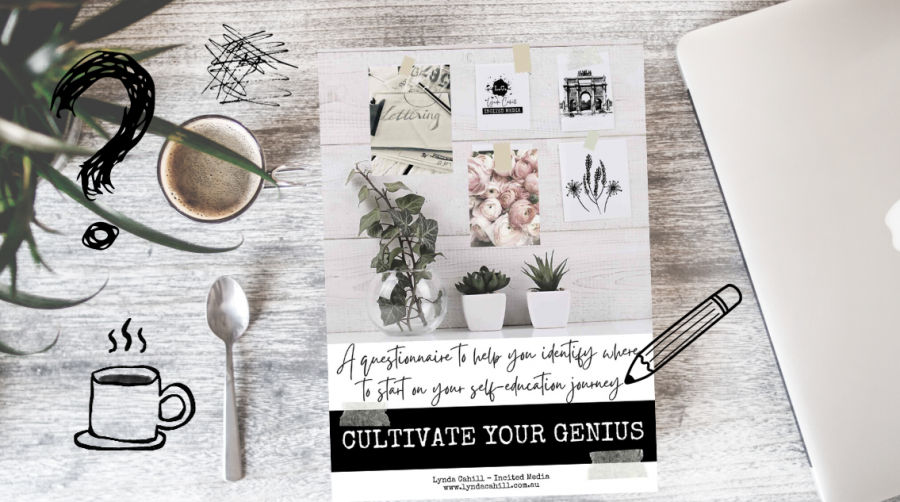Hello, learning lovers! If you are obsessed with notebooks and journals, like I am, then you are going to want to create a commonplace book for self-education and self-inspiration.

WHAT IS A COMMONPLACE BOOK?
A commonplace book is a notebook used to collect and record information on topics you are interested in or building your knowledge on. Your commonplace book can be filled with just written notes, or you may want to keep photos, sketches, newspaper clippings, and other items to create a visual representation of what you are learning through self-education.
You may already have a commonplace book, and just didn’t know there was a name for it, like I didn’t. I first heard the term, “commonplace book” when watching this YouTube video by Jordan Clark. She described notebook lovers as “collectors of ideas, memories, and plans”, and this description immediately resonated with me.
You see, wherever I am, I’m always jotting down anything I find inspiring or any ideas I have in my commonplace book, which I keep with me at all times. I think it is quite wonderful to have so many things I want to remember all recorded in one place.
To explain further, here are a couple of other definitions of commonplace books:
From Wikipedia: Commonplace books (or commonplaces) are a way to compile knowledge, usually by writing information into books. They have been kept from antiquity, and were kept particularly during the Renaissance and in the nineteenth century. Such books are essentially scrapbooks filled with items of every kind: recipes, quotes, letters, poems, tables of weights and measures, proverbs, prayers, legal formulas.
Ryan Holiday: “A commonplace book is a central resource or depository for ideas, quotes, anecdotes, observations and information you come across during your life and didactic pursuits. The purpose of the book is to record and organize these gems for later use in your life, in your business, in your writing, speaking or whatever it is that you do.”
Hearing these definitions describing the process I had been using for so long was music to my ears. I had always felt like a weirdo keeping all of these notebooks, so it was a relief to hear that commonplace books have been around for centuries, and that many others use them the same way I do.
You can read more about my Incited Media Journal Process here and learn how I use my commonplace book to keep myself feeling inspired and excited (incited) about my learning and my work.

HOW TO UDE YOUR JOURNAL AS A COMMONPLACE BOOK FOR SELF-INSPIRATION AND SELF-EDUCATION
I keep a commonplace book specifically for self-education and self-inspiration. I like to think of my commonplace book as a place that I capture everything that inspires me or that I am curious about. It is how I learn.
In my work as a content creator, I have to do a lot of research for the articles I write. Like most writers, I have pillar topics that I write about, so whenever I am doing self-education on a subject, I like to take note of key points from books I read, information from thought leaders and what their theories are, and ideas for articles I could write. I used my commonplace book to design and plan the INCITED magazine, which you can see here.
I’ve also had to learn a lot about running a business. So, my commonplace book is also full of entrepreneurs who inspire me, motivational quotes, and tips I pick up from courses I do (such as Perfecting Blogging course and the Nail Your Niche Bootcamp).
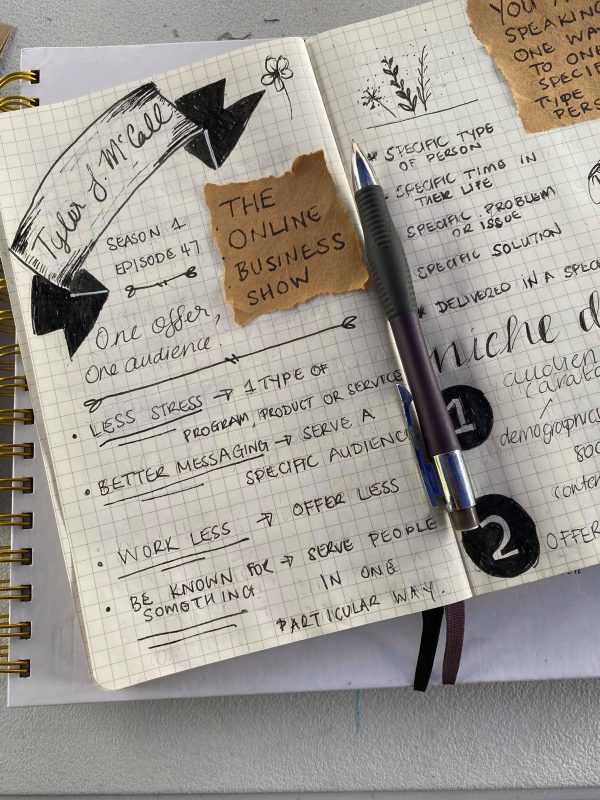
HOW IS A COMMONPLACE BOOK DIFFERENT TO A JOURNAL?
A commonplace book is not a diary or planner, so there is no pressure to use it every day. You use it when you want to record information that you don’t want to forget, because it inspires or teaches you.
While bullet journals are usually kept for chronological planning or reflection, a commonplace book is used for knowledge building or collecting wisdom, and keeping it for future reference.
WHO CAN USE A COMMONPLACE BOOK?
So, who can use a commonplace book? Here is what wikipedia says: “Commonplaces are used by readers writers, students, and scholars as an aid for remembering useful concepts or facts. Each one is unique to its creator’s particular interests.”
I’d like to go a little further, and say anyone who wants to build and maintain a collection of wisdom for inspiration and knowledge building may choose to create a commonplace book: Content creators, researchers, artists, and learning lovers – or anyone who wants to master their craft.
My daughter and I did the spread below when she was teaching me about Harry Potter (I could never remember what a horcrux was!).
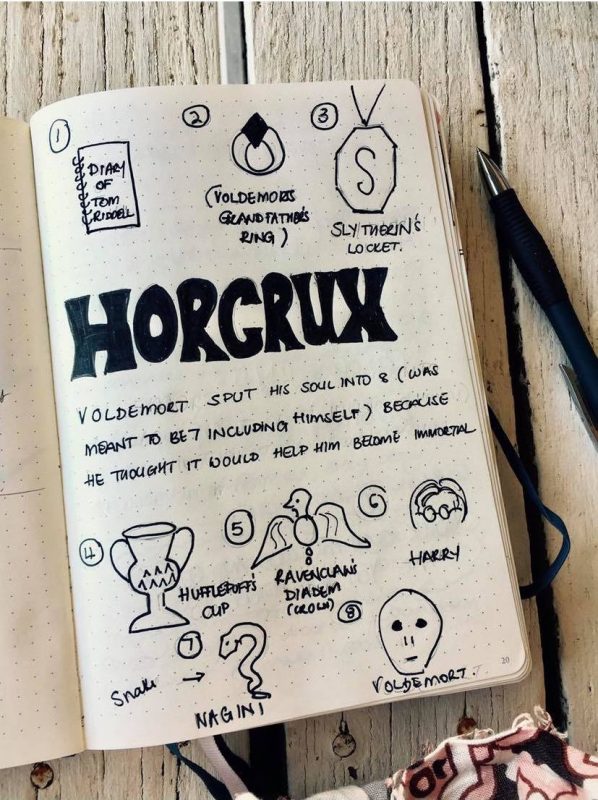
COMMONPLACE BOOK IDEAS: HOW TO START A COMMONPLACE BOOK
A commonplace doesn’t have to be a book. It is essentially just a place where you keep everything on a particular topic together.
For example, while I usually keep a commonplace book (using a notebook or journal) when I conduct research or plan a writing project, I sometimes turn my wall into a ‘commonplace’. I jot down ideas on scrap bits of paper and stick them on my wall so I can see everything all laid out together. Once I have it all figured out I stick the papers in my proper commonplace book, by using some glue or washi tape.
Another popular method is using index cards and keeping them in a box. Elizabeth Gilbert, Austin Kleon, Ryan Holiday, and Amy Landino have all talked about using this method. Others may use Google Docs or Evernote. I’ve tried keeping a digital commonplace book, but I use it once and never look at it again. I much prefer to have a physical book to doodle and take notes in.

The beautiful thing about a commonplace book is that it is yours, so you can fill it with whatever you want, and decorate it how you choose. Ideas, sketches, notes from podcasts, quotes from books, snippets of conversations, life experiences, your feelings, words of wisdom, excerpts from powerful speeches, details about people who inspire you, concepts, brainstorms, mind maps, designs… anything!
As I mentioned, I mostly use my commonplace book for self-education and self-inspiration, so I write down ideas for creating content, or make notes on a topic I am curious about. I’ve also created commonplace books for areas of my life other than work. For example, when I was planning a huge trip to Europe I kept notes about each place I was going to visit, notable people from the area, etc., and I also have one for learning Italian.
It is a good idea to number your pages and have a bit of an index either at the front or the back of the book to group together key themes and the corresponding page numbers so you can find things quickly.
A quick Google search will give you a glimpse into the commonplace notebooks of people from history such as Charlotte Mason, Virginia Woolf, and Isaac Newton. However, I think Leonardo da Vinci’s notebook is the most interesting. In it, he kept sketches and diagrams of his inventions and art, and notes on his areas of interest such as anatomy, landscape, astronomy, and architecture.
Here is a commonplace piece I put together when I was learning about Leonardo da Vinci.
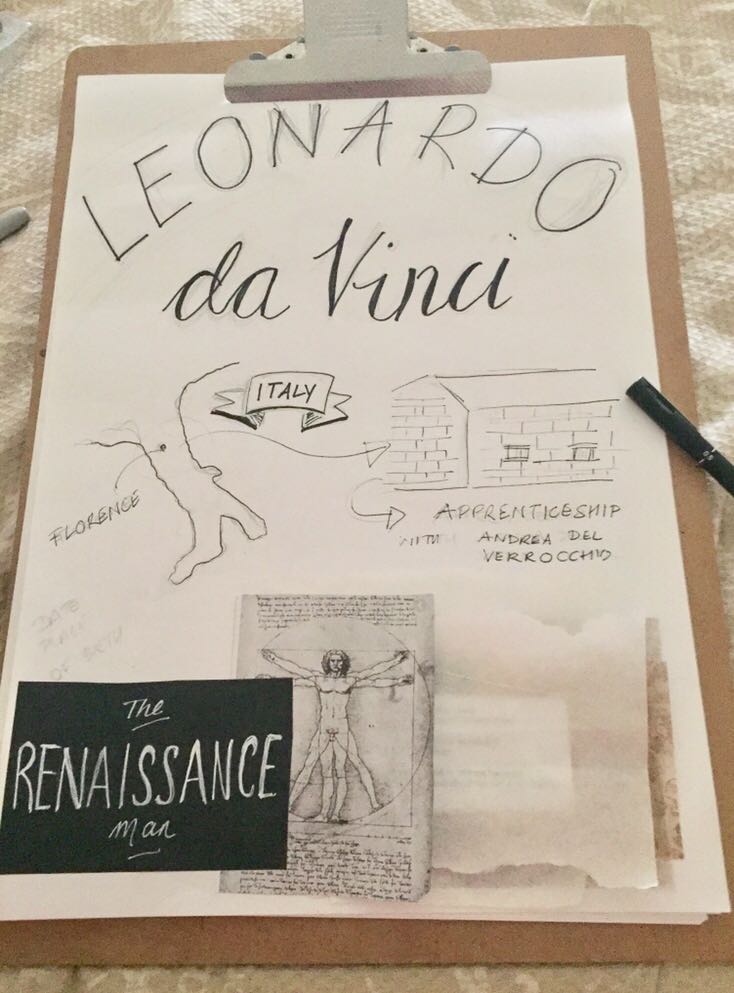
It can take some time for your style to evolve, so don’t stress about this at all. In fact, I think commonplace books look far more interesting and inviting when they are messy.
However, you can try to create a particular aesthetic. For example, I like to sketch flower doodles all over my pages because I think a simple doodle can make a page look more interesting. Some people stick to a colour theme, or want a vintage vibe. It just has to be something that is going to make you want to read your commonplace book over and over again.
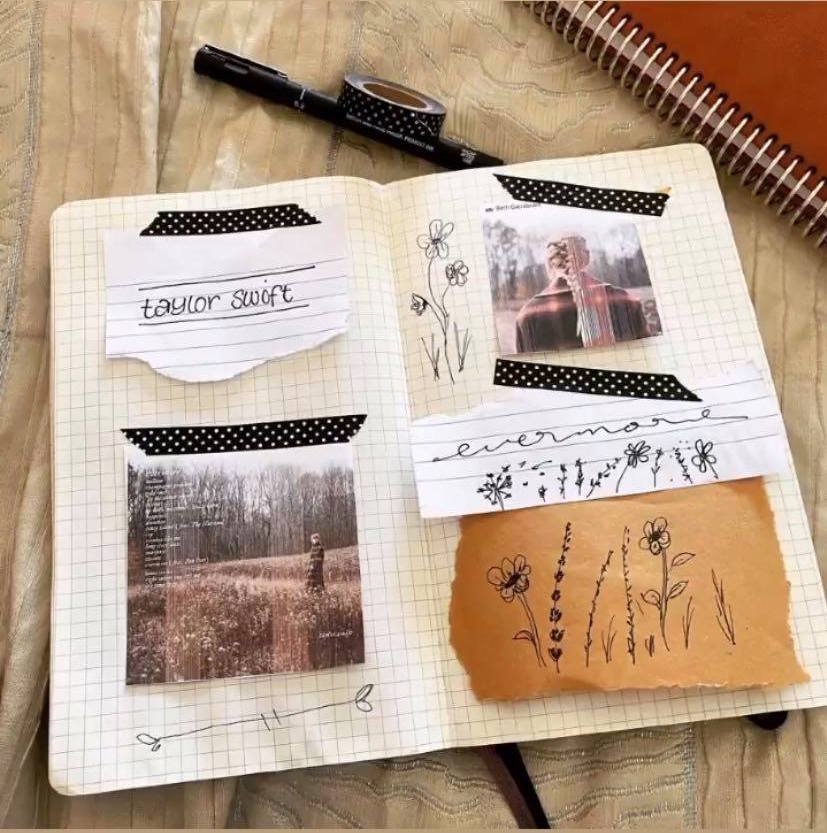
My commonplace books are my teachers. They are a time capsule documenting what I was interested in at a particular point in my life, each lesson represented by sketches, quotes, notes, and mindmaps. They are also my go-to resource when my soul needs some sunshine.
Sign up to my monthly newsletter and get a copy of my FREE “Cultivate Your Genius” questionnaire to help you identify where to start on your self-education journey.
